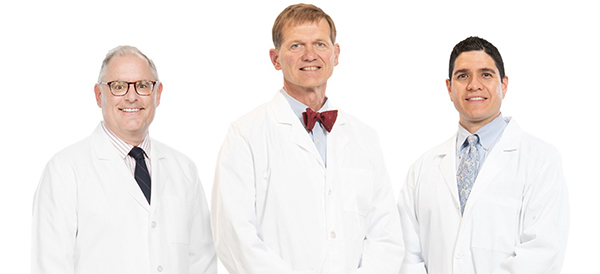
Bone Health & Hip Resurfacing
Bones support and shape our bodies by anchoring muscles, protecting our vital organs, and they are very much alive. Bones constantly revitalize themselves through a process called bone remodeling. During this process cells called osteoclasts break down the old bone so the body can reabsorb it in order for other cells (osteoblasts) to form new bone.
These cells are regulated by hormones that include calcitonin, parathyroid hormone, estrogen (in women), and testosterone (in men). As we age, production of hormones slow and more bone is deconstructed than constructed, our bones become more porous which is known as osteoporosis. This process makes individuals at risk for fractures.
Osteoporosis is a chronic, progressive disease characterized by low bone mass, bone deterioration, and decreased bone strength leading to increased bone fragility, morbidity and mortality. Osteoporosis is the most common bone disease in humans and it affects women as well as men. It often occurs during the seventh decade of life.
Osteoporosis is a major public health threat for approximately 44 million Americans or 55 percent of those 50 years and older. Ten million Americans are estimated to have osteoporosis; eight million are female and two million are male.
However, osteoporosis can strike at any age. In the first two decades of life our bodies build bone much quicker than the remodeling process takes back bone in reabsorption. By age 20 bones are as dense as they will ever be; then the process begins to decline. As estrogen and testosterone levels decrease with age, the rate of bone loss increases significantly. In the first five to seven years of menopause, a woman can loose up to 20 % of her entire bone mass. As estrogen levels decrease, osteoclasts become more active and bone demolition increases.
Risk Factors
- Advanced age
- Genetics
- Lifestyle factors such as smoking, low calcium and vitamin D intake
- Being thin
- Low BMD
- Previous fracture

Are you experiencing hip pain and discomfort?
Contact us to schedule an appointment to speak with one of our orthopedic doctors at one of our locations near you or give us a call at (803) 256-4107.
Secondary Causes of Bone Loss
first
Your content goes here. Edit or remove this text inline or in the module Content settings. You can also style every aspect of this content in the module Design settings and even apply custom CSS to this text in the module Advanced settings.
Medications
- Oral glucocorticoid
- Gonadotropin-releasing hormone
- Intramuscular medroxyprogesterone acetate
- Immunosuppressives
- Heparin
- Long term use of anticonvulsants
- Excessive thyroxine doses
- Cytotoxic agents
Genetic disorders
- Osteogenesis imperfecta
- Thalassemia
- Hypophosphatasia
- Hemochromatosis
Disorders of calcium balance
- Hypercalciuria
- Vitamin D deficiency
Endocrinopathies
- Cortisol excess
- Cushing’s syndrome
- Gonadal insufficiency
- Hyperthyroidism
- Type 1 diabetes mellitus
- Primary hyperparathyroidism
Gastrointestinal disorders
- Chronic liver diseases
- Malabsorption syndromes
- Total gastrectomy
- Billroth I gastroenterostomy
Other disorders
- Chronic renal disease
- Rheumatoid arthritis
- Multiple myeloma
- Nutritional disorders
- Lymphoma and leukemia
- Systemic mastocytosis
Prevention & Treatment
first
Your content goes here. Edit or remove this text inline or in the module Content settings. You can also style every aspect of this content in the module Design settings and even apply custom CSS to this text in the module Advanced settings.
DEXA Scan
If your T-score is 0, then your bone density is equal to the average 25 year old of the same sex and ethnicity. If your T score is + 1.0 then, statistically your score is one standard deviation above the mean. Conversely, if your score is T = -1.0 then you are one standard deviation below the mean. By definition, ninety percent of the population at age 25 falls within +1.0 to – 1.0. This is defined arbitrarily as normal bone density.
Bone diseases have a major impact on the population. Osteoporosis is a particular threat because of its silent nature which surfaces after a fracture has occurred. Osteoporotic fractures occur at the rate of 1.5 million per year in the United States leading to hospitalization, emergency room visits, 2,600,000 physician office visits, and placement of 180,000 individuals in extended care facilities. Caring for these fractures results in an annual direct care expenditures of 12 to 18 billion dollars in the year 2002; indirect costs such as lost productivity add billions to these figures.
Diet
Exercise
The National Osteoporosis Foundation in 2006 listed five important steps to bone health and osteoporosis prevention: get the daily recommended amounts of calcium and vitamin D, engage in regular weight-bearing exercise, avoid smoking and excessive alcohol consumption, talk to your health care provider about bone health, and have a bone density test and take medication when appropriate.
Pharmacologic intervention
Hip Surface Replacement
Femoral neck fracture is the most common complication after hip surface replacement (HSR). It occurs in 1% of all patients. It most commonly occurs 3 months after surgery. After 6 months the bone is fully recovered from surgery and fractures no longer occur (similar fracture chance as the average population).
At this point it is known that women have a higher risk of fracture than men. Also, elderly patients have a higher rate than younger patients. To better assess individual fracture risk after surgery, we are now obtaining DEXA scans routinely on all patients. No published data yet exists regarding fracture risks related to a specific DEXA score. However, logic dictates that patients with lower scores may be at higher risk. Furthermore, the risks in these patients may be reduced if additional precautions are taken. Therefore we have developed the following protocol.

